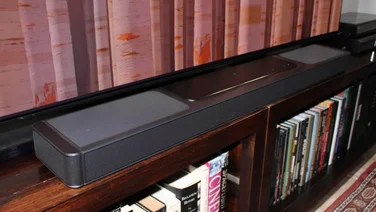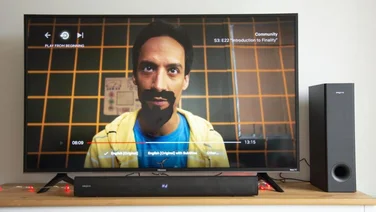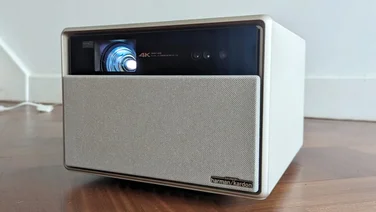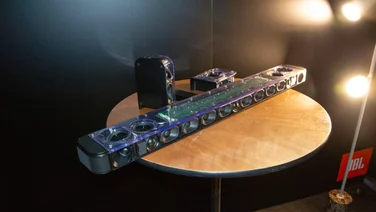To help us provide you with free impartial advice, we may earn a commission if you buy through links on our site. Learn more
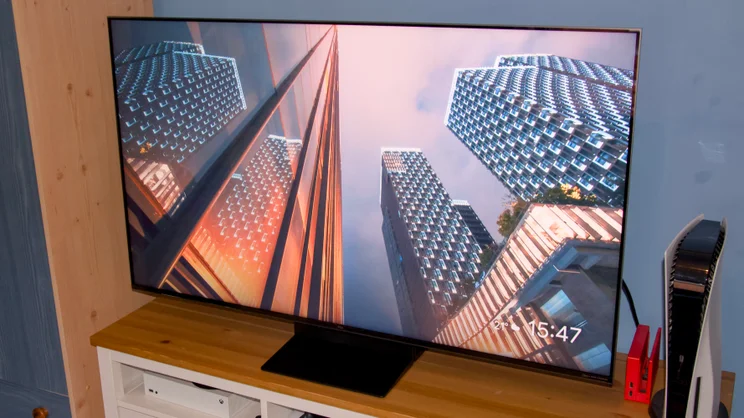
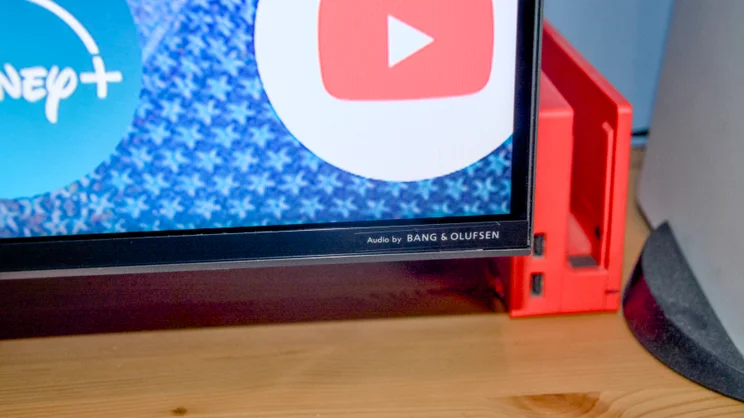
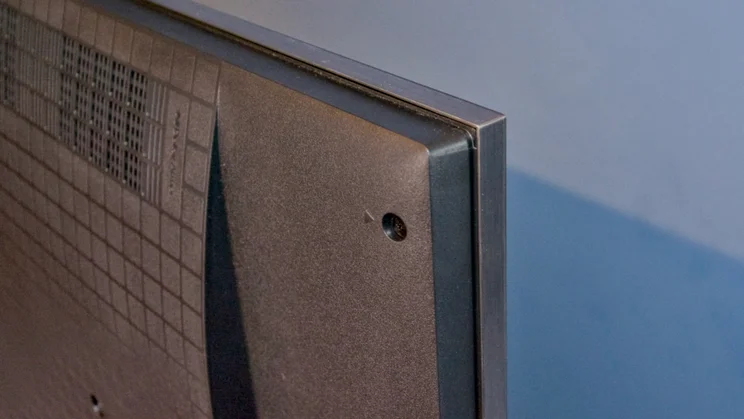
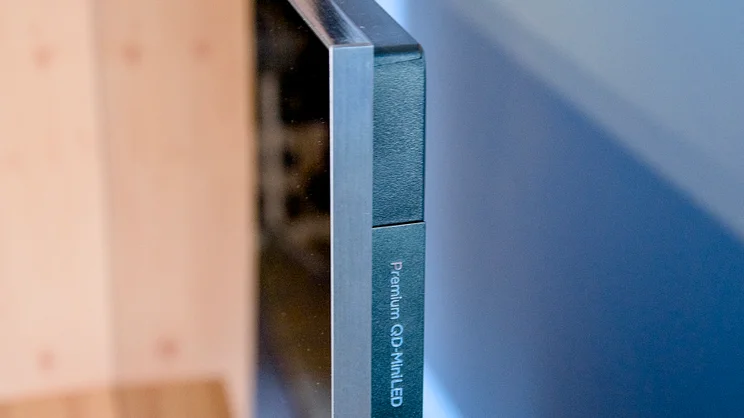
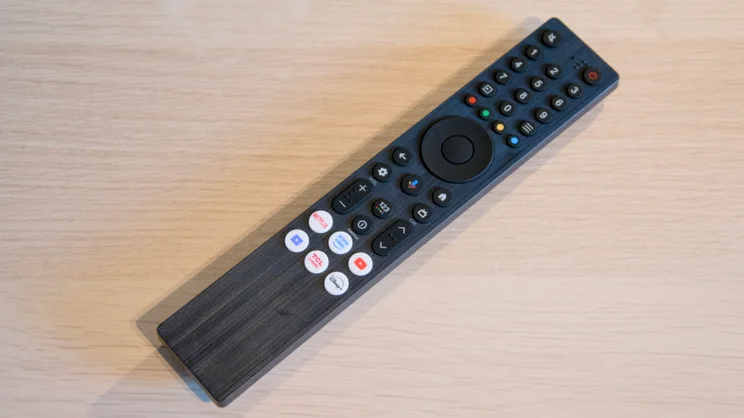
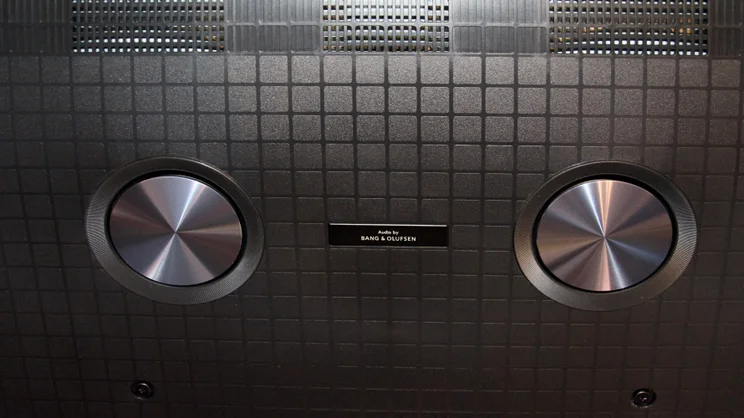
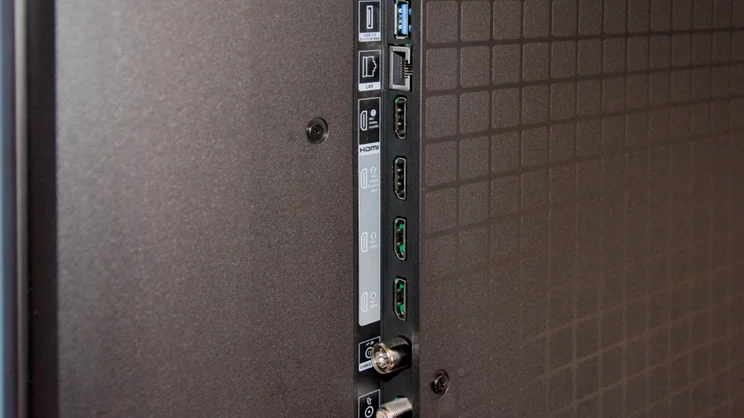
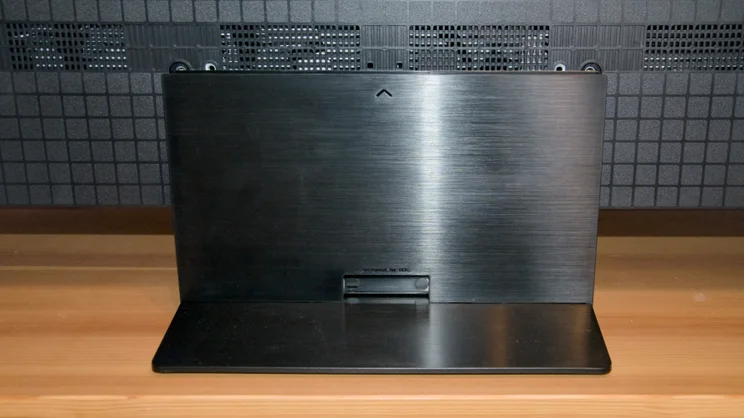
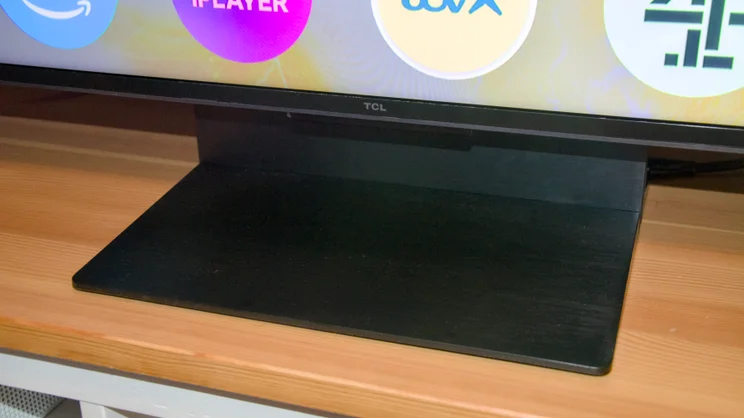
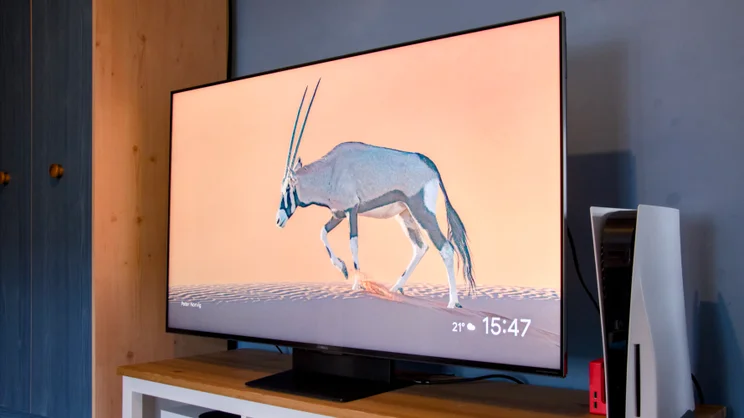
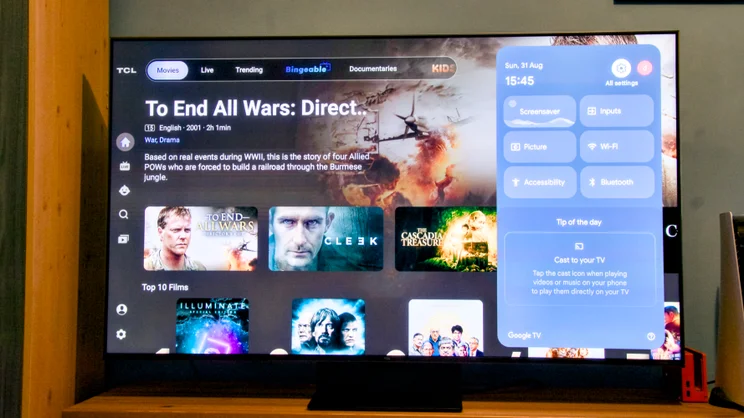
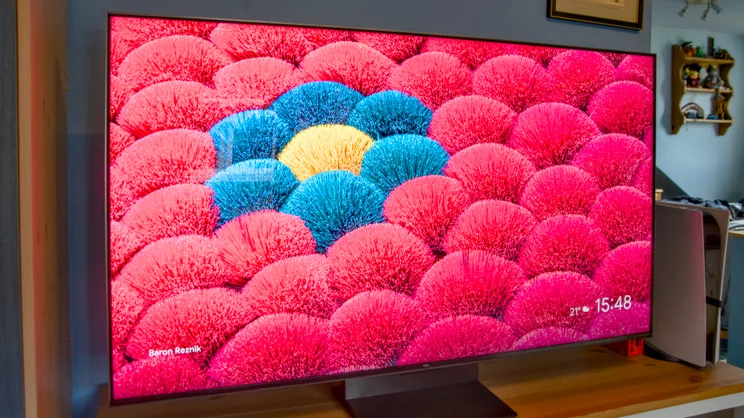
- Very bright and colourful
- Exceptional value
- Great gaming spec
- Only two HDMI 2.1 inputs
- Slightly underwhelming audio
While some manufacturers offer both OLED and Mini LED TV ranges, TCL focuses squarely on the latter. It’s an approach that serves the Chinese brand extremely well, and the mid-range TCL C7K exemplifies exactly why it’s emerging as a television powerhouse.
Incredibly bright and colourful, equipped with support for pretty much every gaming feature and streaming service you could ask for, and featuring a sound system tuned by Bang & Olufsen, the TCL C7K is a Mini LED force to be reckoned with. It may be a slight step down from the TCL C8K in performance terms, but it’s even better value for your average punter.
TCL C7K: Key specifications
| Screen sizes available | 50in (50C7K), 55in (55C7K), 65in (65C7K), 75in (75C7K), 85in (85C7K), 98in (98C7K) and 115in (115C7K) |
| Panel type | VA-type quantum dot LCD, with Mini LED lighting and local dimming |
| Resolution | 4K/UHD (3,840 x 2,160) |
| Refresh rates | Up to 144Hz |
| HDR formats | HDR10, HLG, Dolby Vision, HDR10+ |
| Audio enhancement | Bang & Olufsen-designed speaker system |
| HDMI inputs | 2 x full-spec HDMI 2.1 (one with eARC), 2 x HDMI 2.0 |
| Freeview Play compatibility | No |
| Tuners | Terrestrial Freeview HD |
| Gaming features | ALLM, 4K/144Hz, Dolby Vision Game mode, VRR, AMD FreeSync Premium Pro |
| Wireless connectivity | Bluetooth, Wi-Fi |
| Smart assistants | Google Assistant |
| Smart platform | Google TV |
What you need to know
The C7K sits in the centre of TCL’s 2025 quantum dot Mini LED range. Above it, you’ve got the TCL C8K – the brand’s flagship in the UK this year – while below it, there are the C6K and its cheaper 60Hz variant, the C6KS, which we’ll have a review of soon.
All four models utilise LCD panels with quantum dot filters and blue Mini LED backlights and run the Google TV operating system. However, there are key differences in terms of the panel specification, peak brightness, the number of dimming zones, sound system and the screen sizes each is available in.
The C7K I’m looking at here is the 55in model, but it’s also available in 50in, 65in, 75in, 85in, 98in and an enormous 115in screen size. Peak brightness for the range is stated at up to 3,000 nits, while the number of independent dimming zones is said to rise from 336 on the 50in option to almost 3,000 on the 115in model.
Movie lovers will be pleased to hear that all four main HDR formats (HDR10, HDR10+, HLG and Dolby Vision IQ) are supported, while gamers are well served by support for 4K@144Hz on two of the C7K’s four HDMI ports.
Price and competition
Aggressive pricing is a key part of TCL’s TV strategy, and just one look at the numbers here will be enough to get those looking for impressive specs (and huge sizes) at affordable prices excited.
The TCL C7K range starts at £599 for the 50in model, with the next size up – the 55in model I tested – costing £699. The 65in will set you back £849, while the 75in, 85in and 98in models are priced at £1,149, £1,499 and £2,299, respectively.
If you have the room and the budget for it, the colossal 115in variant is available for £7,499. That’s a lot of money for a TV, but less than a third of what the slightly larger Hisense 116UX costs, although that television does utilise cutting-edge RGB Mini LED technology.
Across the various sizes, TCL’s C7K undercuts just about every other Mini LED option. The Panasonic W95B is a fair bit dearer at £899 for the 55in, £1,199 for the 65in, £1,599 for the 75in, and £2,199 for the 85in, as is LG’s Mini LED flagship, the QNED93, the 55in variant of which will set you back £1,099. Even LG’s step-down model, the QNED87, is significantly more expensive at £850.
The only 55in Mini LED TV we’ve tested that’s cheaper than the TCL C7K is the Amazon Fire TV Omni Mini LED, which can be nabbed for £650. But, as we’ll see later, it’s some way behind in terms of performance.
Design, connections and controls
As we’ll discover in the picture quality sections of this review, the C7K overperforms for its price tag, and it’s a similar story in the design department. Build quality feels surprisingly premium: the central stand is sturdy and easy to install, and can be set at one of three heights. I’m a big fan of this as it means you can slip a soundbar of just about any size underneath it. It’s worth noting that the 98in and 115in models use two feet rather than a central stand due to their sheer size and weight.












The panel is slender by Mini LED standards (56mm), although it’s still chunkier than super-svelte OLED options. Still, it doesn’t protrude out the back like a bad Brazilian butt lift, making the TV a tidy option for wall mounting with a 300 x 300mm VESA bracket. While it has the advantage over the C8K in terms of panel thickness, the C7K doesn’t get TCL’s ZeroBorder design, which extends the picture all the way out to the TV’s frame.
All its connection ports, except the power input, face sideways on the right-hand side of the TV as you look at it. The selection covers all the main bases, with two HDMI 2.1 ports (one of which is eARC compatible) supporting 4K at up to 144Hz and the other two handling 4K at 60Hz. Additionally, you’ve got an Ethernet port, USB-A port, cable and satellite sockets and a Common Interface slot. On the wireless front, there’s support for Wi-Fi 5 and Bluetooth 5.4.












As is now the norm, you’ve got a choice of several ways to control the C7K. The remote control will be most people’s first port of call and is rather smartly finished, despite being made of plastic. It’s otherwise a perfectly functional thing, with quick access buttons for Netflix, Prime Video, YouTube, Disney+ and the TCL Channel.
If you’d rather use your smartphone, you can do so via the TCL Home or Google Home apps, and voice controls are supported via Google Assistant if you enjoy barking commands at your TV or into your remote.












Smart platform
TCL has a couple of cheap QLED and FHD options in its lineup that run Fire TV OS, but premium models like the C7K rely on Google TV for their smarts. There’s not much to choose between the two in terms of provision; both offer a comprehensive selection of streaming platforms and apps, including all the major players such as Netflix, Disney+, Prime Video and Apple TV+.
All the main UK TV catch-up apps are present and correct, too, which is great to see, given that this isn’t always true on Google TV. However, the C7K misses out on the IPTV platform Freely, which sees it fall slightly behind Panasonic’s W95B when it comes to an integrated entertainment experience.












Overall, though, navigating the Google TV platform is intuitive, with five clearly defined pages titled For You, Movies, Shows, Apps and Library. The former is curated based on what you’ve watched previously and what’s new or popular, while the latter groups any content that’s been downloaded to the TV. Each page organises content into rows grouped by genre, so prepare to flick through countless carousels if you’re as indecisive as I am.
If you know what you want to fire up from the get-go, you can have Google Assistant do the work for you thanks to voice controls built into the remote. Another welcome Google-specific feature allows you to link your TV to Google Photos and have images displayed as an ambient screensaver.
Image quality
The TCL C7K delivers picture quality a cut above what you’d expect from a TV costing £699. In its Standard mode, it returned average multi-point greyscale and colour saturation sweep Delta E scores of 14.2 and 12.3 when tested using a Portrait Displays C6 HDR5000 colourimeter, a SpectraCal VideoForge Pro pattern generator and the Calman Ultimate calibration software. These are well above the visible threshold of 3, but typical of out-of-the-box picture modes that prioritise impact over accuracy.
The Vivid mode is even less accurate, with average Delta E errors of 21 for greyscale and 15.4 for colours, but both it and the Standard mode are supremely watchable due to how bright, contrast-rich and well-balanced the C7K’s colour palette is. The TV can simultaneously reproduce bright peaks and dark areas with nuance and a striking effect.












These numbers are in a very similar ballpark to the Panasonic W95B and LG QNED93. The former produced an average Delta E of 11.7 and 13.3 for grayscale and colours in its out-of-the-box Normal mode, while the latter was measured at 12.2 and a shade under 10 in Standard mode. But don’t forget those TVs are a couple of hundred quid more expensive, and as we’ll see later the TCL C7K has more brightness to play with.
TCL’s mid-range Mini LED can do accurate, too, although it’s not quite as on the money as the options mentioned above, nor can it match the Filmmaker mode fidelity of its pricier stablemate, the C8K. In this mode, it produced average Delta E greyscale errors of 3.1 and saturation sweep errors of 1.8 versus 1.4 and 1.1 on the W95B, 1.2 and 2.6 on the QNED93, and 1.2 and 1.1 on the C8K. But I’d be willing to bet that your average consumer is not going to notice a difference or call out the C7K for skewing artistic intent; I certainly wasn’t.
As the C7K uses a VA panel, it trades some off-axis performance for contrast, but I didn’t find it a particularly poor watch from severe viewing angles. It also manages to handle reflections pretty well thanks to a nanoscale film. This didn’t eradicate the reflection of light sources in a dark room, nor did it prevent objects from being visible on the screen during viewing sessions when I had the curtains open. However, reflections were reduced compared to a non-treated screen, and there wasn’t a disastrous effect on the black level.
HDR performance
A sizeable proportion of the content most people watch is still SDR, but you’re going to see this TV at its best by feeding it HDR material.
In terms of colour gamut coverage, TCL claims that the C7K can reproduce 97% of the DCI-P3; I measured coverage at 96.4% but am willing to give the brand the benefit of the doubt here. BT.2020 coverage was recorded at a very respectable 78% in Filmmaker Mode, which is one of the best scores outside of QD-OLED TVs we’ve tested, such as the Samsung S95F (89%).
Even more impressive was the accuracy with which the C7K reproduced colours within that HDR gamut. A P3 saturation sweep within the BT.2020 colourspace produced average Delta E errors of just 1.9, while the TV aced the multi-point greyscale part of the HDR test, returning Delta E errors of 1.5.












But perhaps the C7K’s most notable feat is balancing that accuracy with some big brightness numbers. On a 10% window in Filmmaker Mode, it hit 972cd/m2, peaking at 1,151cd/m2 on a 25% window, and achieving 757cd/m2 on a full-field pattern. Those peak and full-field figures beat the Panasonic W95B, and although you’re getting slightly brighter highlights on the LG QNED93 (1,326cd/m2), the TCL can illuminate the whole screen more potently.
Switching to one of the less accurate modes, TCL really starts to flex its brightness muscles. Standard mode proved the brightest of the lot, hitting 2,820cd/m2 on a 10% window and 889cd/m2 on a full-field pattern. Greyscale and P3 saturation sweep figures of 17.6 and 22.6 demonstrate you’re losing fidelity, but in conditions with a lot of ambient light, the extra brightness was greatly appreciated.
Highlights in bright scenes were splendidly vivid, while there was an impressive amount of shadow detail and deep, natural black on show at the other end of the contrast spectrum. Meanwhile, the C7K’s engaging and expansive colour palette worked well for any type of HDR content I threw at it. The gaudy interiors of the Arconia hotel in Only Murders in the Building were appropriately extravagant, while the TV’s handling of contrast successfully conveyed the darker, dystopian and often terrifying scenes in Alien: Earth.
Some TCL TVs we’ve tested have experienced backlight issues when displaying Dolby Vision content that quickly cuts from dark to light shots, but fortunately, that wasn’t something I came across here with on-device streaming apps or external sources.
To test the TCL C7K, I used Portrait Displays Calman colour calibration software.
Gaming
The TCL C7K has one main gaming weakness: only two of its four HDMI ports support the 2.1 specification required to game in 4K at 144Hz. But this is only going to affect people with multiple next-gen consoles, and every other aspect of its gaming spec is up to snuff.
There’s support for Auto-Low Latency Mode (ALLM), Variable Refresh Rate (VRR) and FreeSync Premium Pro, and a dedicated Game Bar that enables you to engage an “Aiming Aid”, switch between the X and Y gaming picture presets, and enhance shadow details, among other options.












The praise I’ve heaped on the C7K’s HDR performance rings true for its gaming performance, and I had a great time regardless of which picture preset I used. The dedicated Game mode is an impressive combination of very bright highlights and accurate grayscale and colour reproduction.
In this mode, the TV peaked at 2,090cd/m2 on a 25% window, with 10% window brightness a tad dimmer at 2,005cd/m2. Full-field brightness was recorded at a very respectable 773cd/m2, beating both the Panasonic W95B and LG QNED93 in their brightest modes.












And for a low-latency mode able to render 4K graphics at 60Hz in just 9.5ms (measured using a Leo Bodnar Video Signal Input Lag Tester), it’s pretty colour-accurate too. Multipoint Greyscale errors were recorded at an average 4.9 Delta E, while a P3 saturation sweep inside BT.2020 returned an average Delta E of 4.2, just over the visible threshold, but nothing to lose sleep about.
TCL’s gaming interface is a useful tool to have at your disposal, enabling you to quickly access additional features like an Aiming Aid, Shadow Enhancer and Screen Magnifier. These aren’t going to be hugely relevant for casual console gamers, but will come in handy for PC players wanting to take full advantage of what this TV can do.
Sound quality
The only area in which I was a little disappointed by the TCL C7K’s performance was audio. I had high hopes for its 2.2-channel 60W “Audio by Bang & Olufsen” sound system, but ultimately feel like the partnership is more of a marketing ploy than a true attempt to really take TCL’s onboard audio to a new level.
The TV has a solid amount of power and volume to draw on and does so without distorting to any notable degree. However, Movie mode proved a little sharp for my tastes and left me slightly cold where low-end reproduction was concerned, despite the system sporting two subwoofers.












This treble-leaning focus does mean dialogue is always clearly articulated, however, and the Speech mode effectively elevates dialogue within the mix. I use my parents as test dummies for speech-related modes, as they typically watch TV with subtitles on, but they were generally able to do without them when watching the first episode of the new series of Slow Horses.
Bang & Olufsen’s influence is only noticeable if you decide to go with the Custom sound mode, which unlocks a Beosonic dial that you can adjust to tweak the sonic characteristics, shifting the dial between Bright, Relaxed, Energetic and Warm. It works well enough as a custom EQ, but don’t go expecting it to suddenly transform the C7K’s sound quality to match that of a high-end audiophile soundbar or surround sound speaker system.
Verdict
With the C7K, TCL has once again shown that it’s able to deliver seriously bright and impressively accurate pictures in a Mini LED package that undercuts the competition. Support for all four of the main HDR formats, eye-catching performance across the wide range of content available via its Google TV platform, and gaming credentials that will satisfy all but the most demanding of gamers make it a top-tier all-rounder.
I’d argue that it’s even better value than its more advanced stablemate, the C8K, and well worth spending a couple of hundred pounds extra on if you were considering buying a QLED television around the £500 mark. In terms of Mini LED performance per pound spent, this is currently where my money would go.


